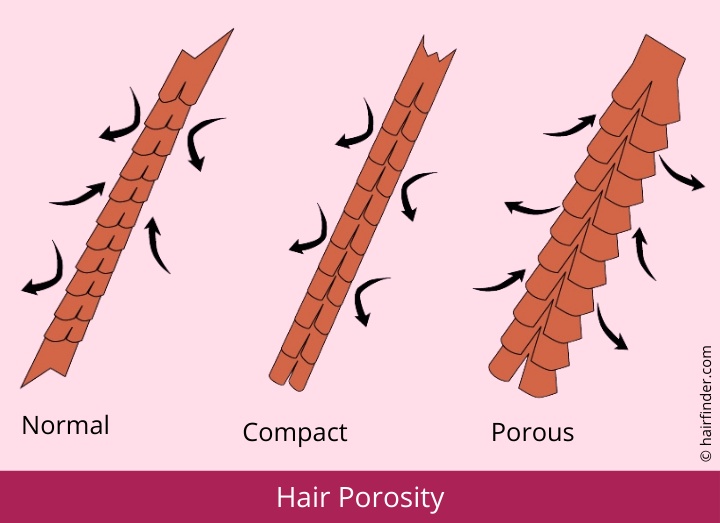As long as you read this blog, you will continue to read how important it is to get and keep moisture into your hair, but what if your hair doesn't have the ability to retain moisture? Well, let's just take a minute to discuss this. In technical terms, the hair's ability to absorb and retain moisture is called porosity. It's important for you to know your hair's porosity level to determine the best products and maintenance for your hair.
 Your level of porosity is in complete relation to the condition of your cuticle layer. Either your cuticle layers could be very open, allowing for moisture to enter the shaft quickly or the cuticle layers could be sealed shut and very resistant to moisture.
Your level of porosity is in complete relation to the condition of your cuticle layer. Either your cuticle layers could be very open, allowing for moisture to enter the shaft quickly or the cuticle layers could be sealed shut and very resistant to moisture. There are three levels of porosity: High, Low and Normal
High porosity is considered overly porous and is the result of over processing, heat damage, chlorine/hard water/mineral saturation, sun damage or the use of other harsh ingredients. Overly porous hair is dry, fragile,brittle and very prone to frizziness. It has an open cuticle that both absorb and release moisture easily. Although overly porous hair absorbs product quickly, it is often dry as the open cuticle does not allow for product retention within the hair shaft. It is best to use a less alkaline solutions with a low pH that help to close the cuticles.
 |
| High Porosity |
Porosity issues stemming from damage can not be corrected. Only time will heal damaged hair. You can, however, create a "temporary" fix until the damaged part is grown out. Protein treatments fill in any holes within the cortex (inner layer of the hair) and also helps to fill in the gaps exposed by a raised cuticle.
Note also if you have overly porous hair and you use hair color, while it will process quickly, the color will also fade quickly...it's that whole open cuticle thing, it won't hold on to anything.
 |
| Low Porosity |
 |
| Normal Porosity |
There are a couple of ways you can check your hair's porosity:
On dry hair, take a strand of several hairs from four different areas of the head (front hairline, temple, crown and nape). Slide the thumb and index finger of your other hand down each hair strand from end to scalp. If it is smooth, you have normal porosity. If your fingers move very fast up the hair strand and it feels exceptionally slick, dense and hard, you have low porosity. If your fingers "catch" going up the strand, feel like they are ruffling up the hair strand, or if the hair strand breaks, your hair is overly porous.
Also, you can take several strands of your hair and drop them into a bowl of water. Let them sit for several minutes. If the hair is floating in the water, then you have low porosity. If the hair sinks, then you have high porosity.
Continuing to get to know your hair will make it easier to determine just what is best for your regimen and maintenance. LOVE YOUR HAIR!!!

No comments:
Post a Comment